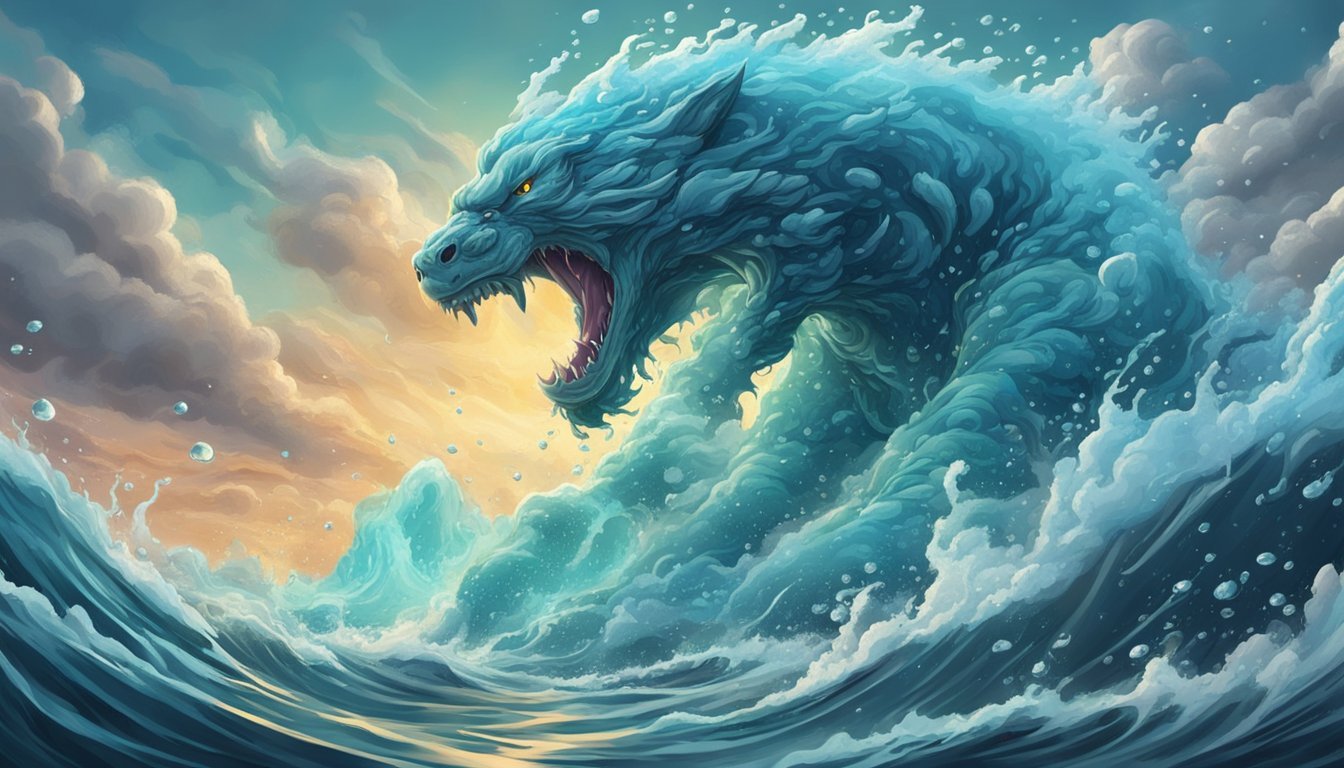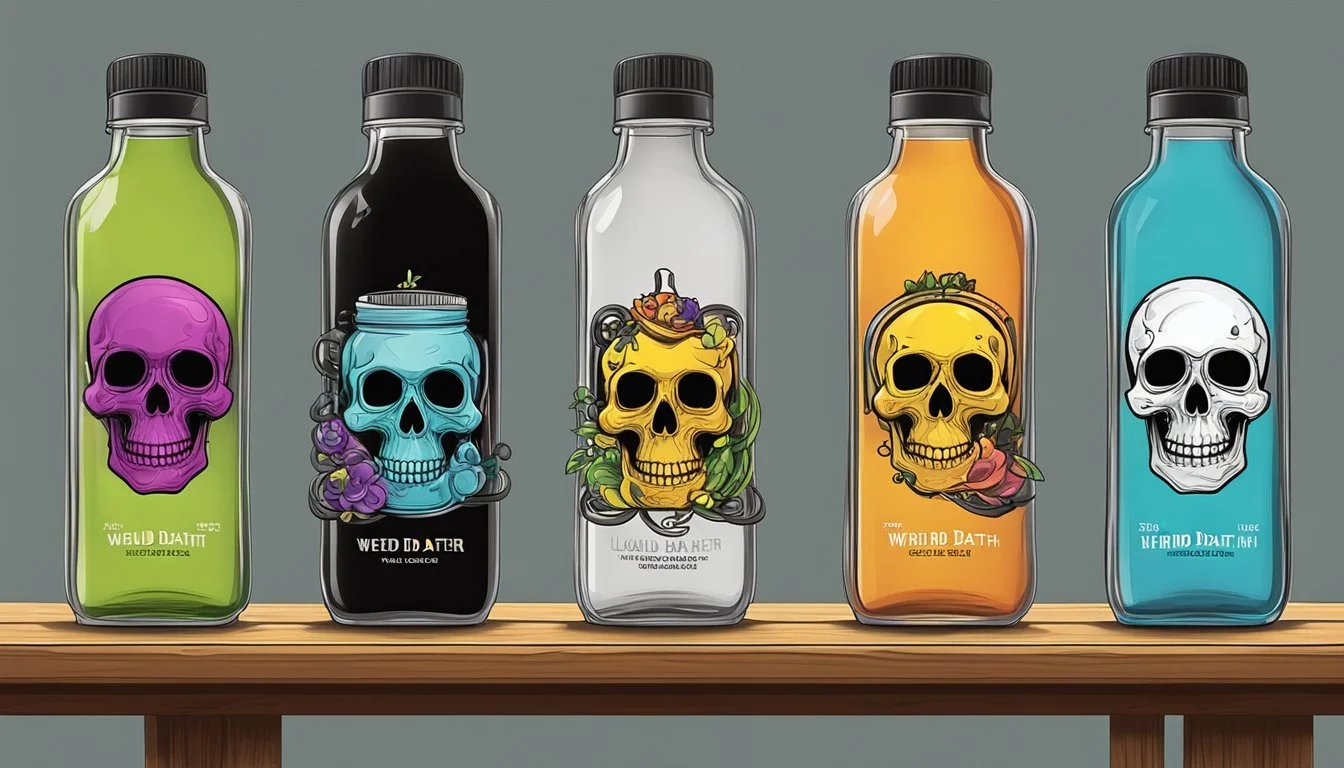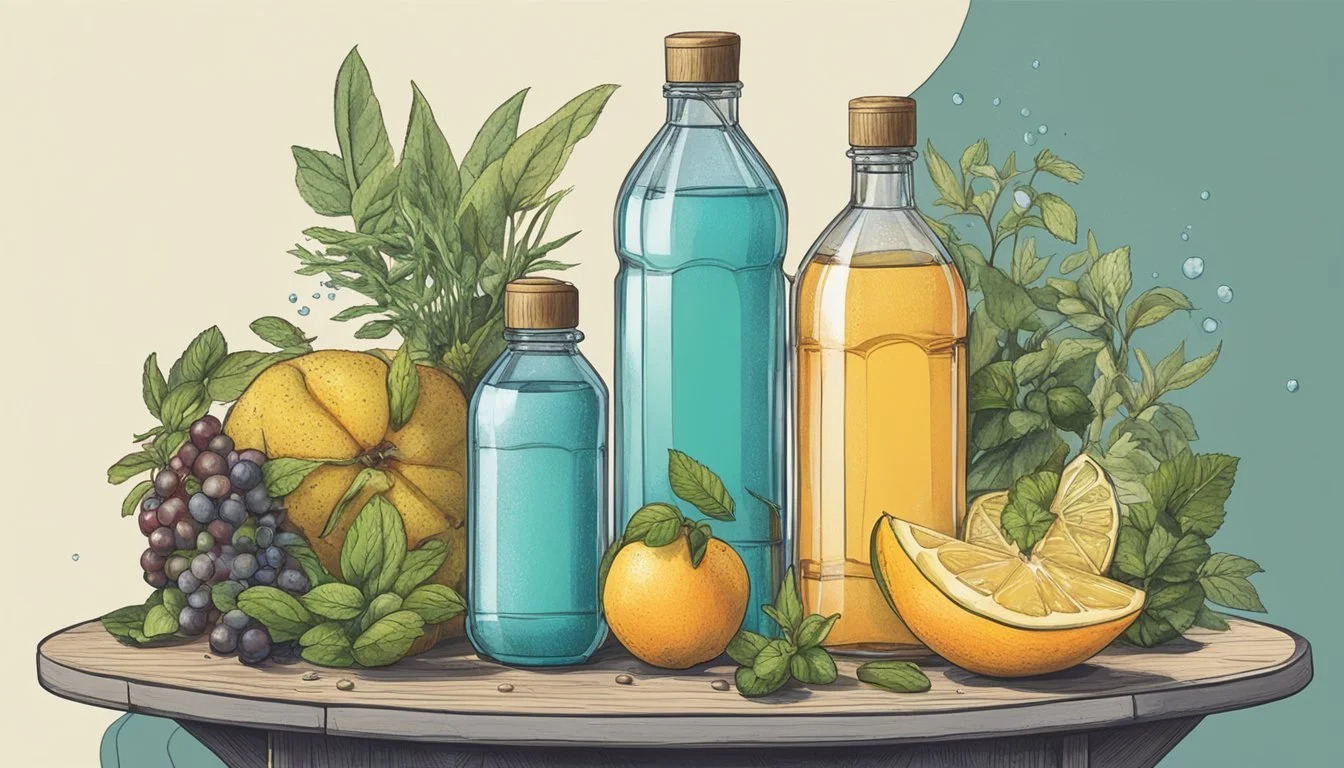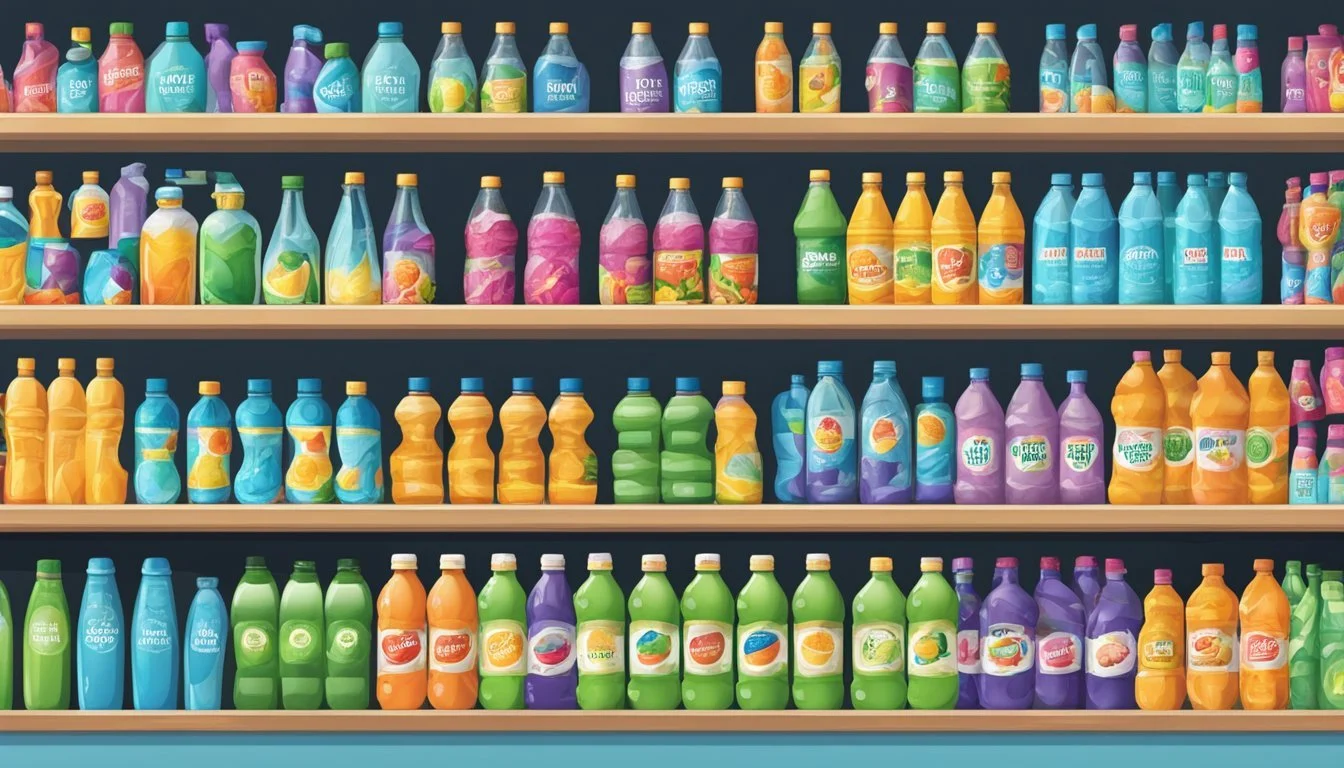Liquid Death vs. Weird Water
Comparing Bottled Water Quality
For those seeking a refreshing and eco-friendly alternative in the crowded bottled water market, Liquid Death presents itself as a noteworthy contender. Offering both sparkling and flat options, this brand packages its water in recyclable aluminum cans, which dramatically lessens its environmental footprint compared to traditional plastic bottles. Liquid Death is not only innovative in its marketing but also boasts a more sustainable approach, potentially making it the superior choice for environmentally conscious consumers.
On the other hand, Weird Water grabs attention with its unique branding and flavor profiles, appealing to those who enjoy a hint of natural taste in their hydration. Its offerings also emphasize purity and quality, vying for a place against established brands like Liquid Death. Whether one prioritizes environmental impact or flavor diversity can significantly influence their preference between these two brands.
Ultimately, the decision between Liquid Death and Weird Water comes down to what the consumer values more: the minimalist, eco-friendly packaging of Liquid Death or the distinctive and varied flavors of Weird Water. Both brands cater to different aspects of the modern consumer’s needs, ensuring there’s something for everyone in the expansive world of bottled water options.
Unveiling Liquid Death and Weird Water
Liquid Death and Weird Water both bring unique philosophies and variety to the bottled water market, differentiating themselves through distinct branding and product choices.
Brand Origins and Philosophy
Liquid Death was founded by Mike Cessario, who drew inspiration from his punk rock and heavy metal background. The brand's ethos revolves around its bold slogan, "Murder Your Thirst," promoting a hardcore lifestyle and environmental responsibility by using aluminum cans instead of plastic.
Weird Water's origins are less well-documented. The brand, known for its quirky and unconventional approach, aims to appeal to those looking for something different. It also emphasizes sustainability, offering an eco-friendly focus similar to Liquid Death.
Product Range and Varieties
Liquid Death offers both sparkling and still water. The water is available in various pack sizes, including single cans and multi-packs. Their products stand out due to their edgy design and marketing collaborations with figures like Tony Hawk and Travis Barker, enhancing their punk-rock image.
Weird Water features a more eclectic product range, with unique flavors and packaging. They target niche markets by blending whimsical branding with a variety of mineral and flavored waters. Their approach caters to adventurers and trendsetters who enjoy standing out.
Ingredients and Source
Liquid Death and Weird Water have distinct characteristics, both in their water sources and the careful selection of additional ingredients and flavors used. Each brand offers unique qualities that set them apart.
Water Sources: Mountain Water and Alternatives
Liquid Death sources its water from a deep underground spring in the Austrian Alps. This source is surrounded by hundreds of feet of stone, naturally protecting the water. The water is then canned at the source to ensure purity and freshness.
Weird Water, on the other hand, offers a variety of sources, including both spring and purified water options. The exact locations of their sources are not typically disclosed, which may concern some consumers. Their purification process aims to remove impurities while maintaining essential minerals.
Carefully Curated Ingredients and Flavors
Liquid Death offers both sparkling and still options. The unflavored versions are free from additives, while the flavored varieties include subtle hints of natural flavors like lime and berry. Their sparkling water achieves its fizz through carbon dioxide gas infusion.
Weird Water also provides flavored options, often incorporating ingredients like agave and lemon juice concentrate. These additions create a unique taste that appeals to consumers looking for variety. Both brands maintain a focus on keeping their products free from artificial ingredients, ensuring a clean and refreshing experience.
Health and Environmental Impacts
Both Liquid Death and Weird Water offer distinct benefits regarding health and environmental sustainability. Their packaging choices and ingredient transparency are vital factors that differentiate them.
Nutritional Value and Health Benefits
Liquid Death and Weird Water provide options to the health-conscious consumer. Liquid Death's unflavored sparkling and still water contain no additives or preservatives, making it a pure hydration source. Weird Water may offer similar clean options, but specific ingredient lists should be checked for any additional components.
Water consumption in moderate amounts is crucial for health and wellness. Both brands promote this fundamental benefit. However, the packaging material can indirectly impact health by potential exposure to harmful substances, with plastic bottles sometimes containing nanoplastics that may enter the body.
Eco-Friendly Packaging and Sustainability Commitments
Liquid Death commits to eco-friendly practices by packaging water in aluminum cans, which are infinitely recyclable. This choice helps reduce waste in oceans and landfills. Unlike traditional plastic bottles, which contribute significantly to ocean pollution, aluminum cans have a lower carbon footprint because they are less energy-intensive to produce and transport.
Weird Water's environmental initiatives might include recycled plastic packaging or other sustainable measures. Still, the eco-friendliness of these alternatives often depends on local recycling capabilities and consumer behavior. Both brands must continuously explore sustainable and environmentally friendly practices to ensure that their products do not end up in loving homes for plastic, littering natural habitats.
By focusing on recyclable materials and responsible resource usage, both brands aim to make positive impacts on the environment while providing clean and healthy hydration options.
Container Comparison: Cans vs. Bottles
Metal and plastic containers each offer distinct benefits and drawbacks for bottled water. This section examines aluminum cans and plastic bottles to understand their impact on sustainability, recyclability, and consumer health.
Aluminum Cans Versus Plastic Bottles
Aluminum cans and plastic bottles are both common packaging options for bottled water. Aluminum cans, like those used by Liquid Death, are favored for their high recyclability, with 70% of each can often made from recycled materials.
Plastic bottles, though lightweight and popular, face scrutiny due to their environmental impact. They are less recyclable than aluminum and contribute significantly to plastic pollution. Additionally, the presence of microplastics and potential toxins in plastic raises health concerns.
Advantages of Recyclable Aluminum
Aluminum cans stand out for their sustainability. They are infinitely recyclable, meaning they can be reprocessed without degrading in quality. Each recycled can save up to 95% of the energy required to produce a new one, making them a more environmentally friendly option.
Plastic bottles, in contrast, often end up in landfills where they can take hundreds of years to decompose. Even when recycled, plastic's quality degrades over time. Aluminum's durability and recyclability make it a strong contender in the debate over sustainable packaging.
Market Perception and Consumer Trends
Liquid Death has gained widespread consumer attention through edgy branding and strategic use of social media. Weird Water, though less known, competes based on distinctive marketing and unique product positioning.
Popularity and Brand Ambassadors
Liquid Death's popularity can be attributed to its bold name and eye-catching can design.
The brand created a distinct niche by marketing canned water with the intensity typically reserved for energy drinks, resonating strongly with millennials and Gen Z. Celebrity endorsements and partnerships with influencers have further amplified its appeal. Artists, comedians, and athletes frequently promote Liquid Death, enhancing its visibility.
Weird Water, while not boasting the same celebrity clout, leverages grassroots marketing and sustainability advocates.
Its eco-friendly messaging attracts a dedicated customer base focused on environmental impact.
The Role of Social Media in Brand Reach
Social media has played a pivotal role in the rapid growth of Liquid Death.
Platforms like TikTok and Instagram serve as key channels for brand engagement, where viral videos and user-generated content boost its profile. Humor and shock value in their campaigns draw significant attention and shareability.
Weird Water also uses social media but with a different approach.
They emphasize educational content about water quality and sustainability, appealing to a conscious consumer segment. Both brands utilize Amazon for distribution, ensuring wide accessibility.
While Liquid Death employs an in-your-face approach, Weird Water focuses on informative and value-based marketing. Both strategies highlight the diverse ways brands can effectively use social media to expand reach.
Flavor Profile and Palatability
Comparing Liquid Death and Weird Water involves evaluating their flavor profiles and palatability. Each brand offers a range of still and sparkling waters with distinctive characteristics.
Taste Test: Flat Water, Sparkling, and Flavors
Liquid Death offers a straightforward option with its Mountain Water and Sparkling Water. The still water provides a crisp, clean taste reminiscent of premium brands like Fiji. The sparkling variant has a strong, fine carbonation comparable to Topo Chico, enhancing the palate's freshness.
Weird Water, on the other hand, provides similar categories. Their still water also boasts a pure, refreshing taste, while their sparkling option features moderate bubbles, giving it a lighter feel.
In flavored options, Liquid Death stands out with unique names like Severed Lime, Mango Chainsaw, and Convicted Melon. These flavors are crafted with a blend of natural essences, offering subtle sweetness without overpowering.
Weird Water’s flavored options, while less creatively named, maintain a focus on natural taste. Flavors like Berry Bliss and Lemon Zest remain true to their fruit origins, offering a palatable yet not overly sweetened experience.
Comparative Analysis of Natural Flavors
Liquid Death’s approach to natural flavors emphasizes a balance of subtlety and distinctiveness. For instance, Severed Lime combines lime with a hint of crispness, making it a popular choice among those who enjoy citrus without extra sweetness.
Mango Chainsaw blends mango and orange, slightly sweetened with agave. This results in a more complex flavor profile, differentiating it from the often simplistic flavored waters of La Croix.
Weird Water’s use of natural flavors tends to be straightforward. Their Berry Bliss avoids artificial aftertastes, and Lemon Zest delivers a tart, refreshing note. The simplicity in flavor creation makes these options appealing to those who favor genuine fruit flavors.
Both brands excel in using natural essences. Liquid Death leans towards bold, unique combinations, while Weird Water sticks to classic, clean flavors. Each has its own strengths, depending on the consumer's preference for innovative or traditional tastes.
Distribution and Retail Presence
Liquid Death and Weird Water differ significantly in their distribution strategies and retail presence. This section examines their accessibility in various retailers and the demographics they each target.
Retailers and Accessibility
Liquid Death is available in many major retailers, including Whole Foods and Amazon. Its unique approach using aluminum cans attracts eco-conscious consumers. This distribution strategy has helped Liquid Death achieve wide accessibility and a prominent retail presence.
Weird Water, on the other hand, hasn't achieved the same retail ubiquity. It is often found in specialized health stores and select supermarkets. While it maintains a presence online through niche retailers and health-focused e-commerce sites, it hasn't penetrated mass-market retailers like Target.
A direct-to-consumer approach is more pronounced with Weird Water, while Liquid Death leverages its partnerships with major stores. This allows Liquid Death to reach a broader audience more efficiently.
Target Markets and Demographic Insights
Liquid Death primarily targets young, environmentally-conscious consumers. Its marketing campaign is edgy, appealing to millennials and Gen Z. The emphasis on sustainability and aluminum can usage resonates with those avoiding plastic bottles.
Weird Water tends to attract a health-focused demographic. Its marketing highlights purity and health benefits, appealing to older adults and wellness enthusiasts. Without widespread distribution, its reach remains limited compared to mainstream brands like Aquafina or Pepsi's Essentia.
Pricing strategies also diverge. Liquid Death competes well with cost-effective options found at budget retailers, whereas Weird Water often commands a premium price due to its niche market positioning.
In conclusion, Liquid Death and Weird Water's retail strategies and target demographics greatly influence their market success and accessibility.
Price Point and Value Proposition
When it comes to Liquid Death and Weird Water, cost and value play critical roles in determining customer choice. This analysis dives into the price structures and the benefits relative to the expenditures associated with each brand.
Cost Analysis: Affordable Luxury or Premium Overpricing?
Liquid Death charges $16.99 for a 12-pack of 16-ounce cans. This positions the brand in a premium category.
Weird Water, in contrast, offers its product at $12.99 for a 12-pack of similar-sized bottles, making it a more cost-effective option.
Both brands aim for a unique consumer experience, but Liquid Death leverages its edgy branding and packaging to justify its higher price. On the other hand, Weird Water markets itself as an affordable luxury, emphasizing its competitive pricing without compromising on quality.
Value for Money: Assessing the Investment
Liquid Death's commitment to unique packaging and marketing adds perceived value, attracting customers willing to pay a premium.
Additionally, its availability in retail stores like 7-Eleven and Whole Foods, along with online and concert distributions, broadens its market appeal.
Weird Water focuses on delivering high value at a more accessible price. With a lower cost per unit and a solid presence in both online and physical stores, it provides a strong value proposition.
Customers seeking an affordable yet high-quality option may find Weird Water to be the better financial choice.
More About Liquid Death
Aqua Carpatica vs Liquid Death: Which Bottled Water is Better?
Core Hydration vs Liquid Death: Which Bottled Water is Better?
Hawaii Volcanic vs Liquid Death: Which Bottled Water is Better?
Hawaiian Springs vs Liquid Death: Which Bottled Water is Better?
Ice Mountain vs Liquid Death: Which Bottled Water is Better?
Icelandic Glacial vs Liquid Death: Which Bottled Water is Better?
Liquid Death vs Cascade Mountain: Which Bottled Water is Better?
Liquid Death vs Crystal Geyser: Which Bottled Water is Better?
Liquid Death vs Crystal Lake: Which Bottled Water is Better?
Liquid Death vs Essence pH10: Which Bottled Water is Better?
Liquid Death vs Kirkland Signature: Which Bottled Water is Better?
Liquid Death vs Proud Source: Which Bottled Water is Better?
Liquid Death vs Richard's Rainwater: Which Bottled Water is Better?
Liquid Death vs Simple Truth: Which Bottled Water is Better?
Liquid Death vs Talking Rain AQA: Which Bottled Water is Better?
Liquid Death vs Whole Foods 365: Which Bottled Water is Better?
Liquid Death vs Whole Foods Italian Still Mineral water: Which Bottled Water is Better?
Mountain Valley Spring Water vs Liquid Death: Which Bottled Water is Better?
Nestle Pure Life vs Liquid Death: Which Bottled Water is Better?
Poland Spring vs Liquid Death: Which Bottled Water is Better?
Purely Sedona vs Liquid Death: Which Bottled Water is Better?
San Pellegrino vs Liquid Death: Which Bottled Water is Better?
Solan de Cabras vs Liquid Death: Which Bottled Water is Better?
More About Weird Water
Aqua Carpatica vs Weird Water: Which Bottled Water is Better?
Cascade Mountain vs Weird Water: Which Bottled Water is Better?
Core Hydration vs Weird Water: Which Bottled Water is Better?
Crystal Geyser vs Weird Water: Which Bottled Water is Better?
Hawaii Volcanic vs Weird Water: Which Bottled Water is Better?
Hawaiian Springs vs Weird Water: Which Bottled Water is Better?
Icelandic Glacial vs Weird Water: Which Bottled Water is Better?
Mountain Valley Spring Water vs Weird Water: Which Bottled Water is Better?
Nestle Pure Life vs Weird Water: Which Bottled Water is Better?
Poland Spring vs Weird Water: Which Bottled Water is Better?
Purely Sedona vs Weird Water: Which Bottled Water is Better?
Richard's Rainwater vs Weird Water: Which Bottled Water is Better?
San Pellegrino vs Weird Water: Which Bottled Water is Better?
Solan de Cabras vs Weird Water: Which Bottled Water is Better?
Talking Rain AQA vs Weird Water: Which Bottled Water is Better?
Weird Water vs Kirkland Signature: Which Bottled Water is Better?
Weird Water vs Whole Foods 365: Which Bottled Water is Better?
Whole Foods Italian Still Mineral water vs Weird Water: Which Bottled Water is Better?







